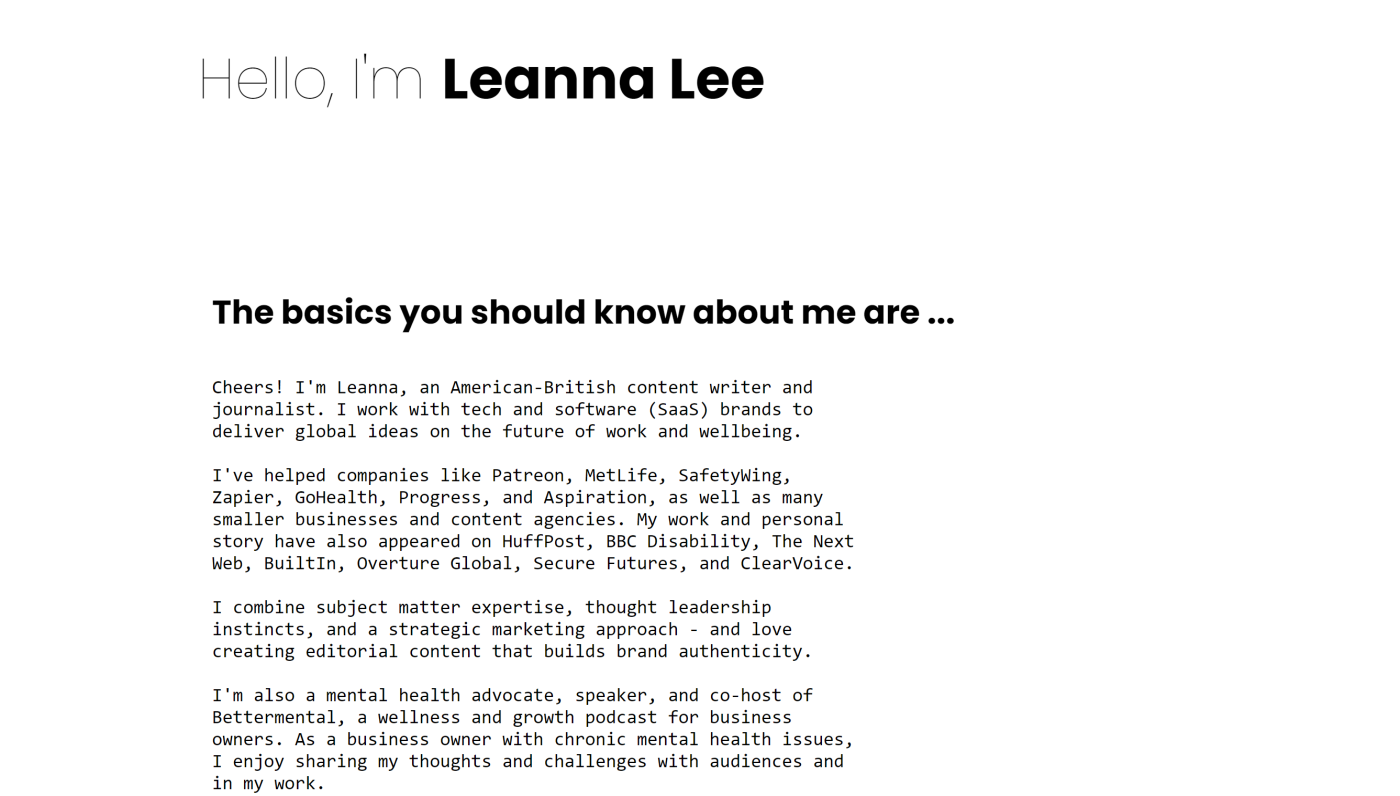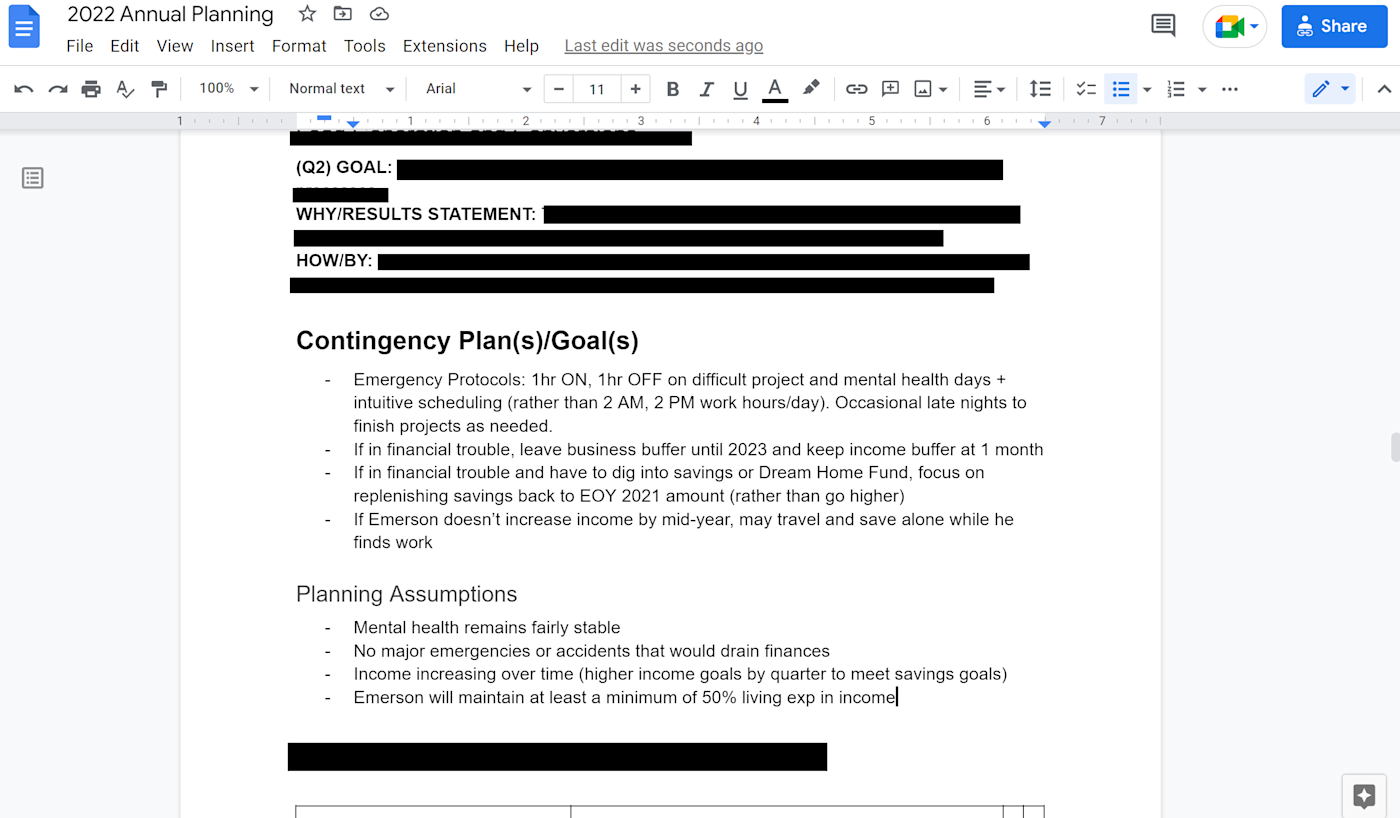Even after years of experience balancing a business with chronic anxiety and depression, it still happens to me about once a year: I’ll get excited about a project and forget to ask the right questions or share my boundaries before jumping in. Inevitably, I find myself overwhelmed and unable to fulfill my client’s expectations.
4 self-care workflows to get through hard times
That’s why I’ve found that setting mental health boundaries is necessary, especially when you work for yourself. It’s another way to advocate for yourself and your business and creates a solid foundation so that you can avoid having confrontations with clients. Think preventative maintenance over reaction: not setting those boundaries in place before you need them can have serious consequences.
Getting to know your work self
So how do you go about setting mental health boundaries? It starts with knowing more about yourself and how you work. And yes, that’s about as easy as it sounds.
It’s taken me about six years of being a business owner, the same amount of time (give or take) in therapy, and a year with a wonderful business coach who taught me how to track my moods and time. But in all fairness, I started during a serious mental health crisis, and it took a good few years to build the support network and find the information that I have today.
So don’t panic. Start small by asking yourself a few questions, like:
-
What does my mental health need from me? How does it affect my life day-to-day?
-
How am I currently structuring my work life to support my mental health?
-
What about work stresses me out? What outside of work stresses me out (and affects how I work)?
-
What do I need to work well?
-
What would my ideal work situation look like?
This will help give you a baseline of things to look for as you dig deeper.
5 important boundaries to set for your business
Learning what you need and how best to protect those needs is a constantly-evolving process. There’s no one right way to identify, create, set, or keep a boundary, which can make it pretty maddening. And when it comes to business, there are plenty of places to start.
Here are five really important types of boundaries and how you can begin discovering your own.
1. When you work
Think about your ideal work hours or, more importantly, the schedule that suits your needs and mental health best. I learned this by figuring out my chronotype, or sleep type, which confirmed that I get the most done in the early mornings and evenings. By tracking my work hours, I realized that part-time hours are ideal for me since intensive work plus fatigue can easily trigger a depressive episode.
So my work hours boundary became: limit weekly workload to 25 hours on a maximum of six days a week (unless I’m having a bad mental health week). Another boundary I’m trying out at the moment is not working on weekends. It’s not always possible, but having two full days to relax makes a huge difference.
Another time-focused boundary to consider is when you’ll take vacations. Building time off into your schedule is great for preventing burnout. It’s also helpful to plan vacations in advance, so you can let clients and customers know your availability upfront.
Getting started: Try tracking your time daily for a couple months to see where your work hours naturally fall. For this to work, you’ll want to be a bit flexible about working at different times of day to get a sense of your energy and stress levels and when you need a break. This is also a great way to learn when you may need additional time off.
2. Who you work with
A lot of my work stress comes from taking on clients and projects that just weren’t a good fit. Choosing your clients and projects carefully means you can avoid compromising your health or having that painful breakup conversation.
Thanks to time, experience, and my coach, I have a list of ideal client qualities and an equally long list of red flags to look out for. I’m also very careful when I research potential clients.
My Manual of Me, a “how I work” page that lives on my site (courtesy of Leapers), has a whole section about potential clients. Here’s a quick snippet: “I’m especially excited by remote-first companies that support small businesses, invest in workers, prioritize personal freedoms and mental health in the workplace, and create humanitarian tech with worldwide impact.”

Getting started: Envision your ideal client. Where do they work? What does your main contact do? What’s important to them, and how do you know you’ll work well together? If you prefer something a bit more structured, you can even start creating your own Manual of Me.
3. How you work
This is a good time to bring in work-life balance. Everyone has a different work boundary style, whether it’s work-life separation, integration, or something in between. The key is figuring out which approach best matches your lifestyle and personalizing it.
I have a pretty hybrid work boundary style. I separate some things (limited calls during break time) and integrate others, like switching up my work hours and days when I’m extra anxious or in a depressive slump.
But this isn’t just about mental health—it’s also a good business practice. Setting work-life boundaries around things like checking email, work calls, the types of projects you take on, and your workflow ensures that you’re fully present during work hours and focused on the right things.
I’ve learned through bitter experience how stressed I get trying to meet short deadlines on a moment’s notice. That led to one of my biggest boundaries: don’t take on quick turnaround projects (less than five business days) for new or problem clients, and always make sure you get advanced notice.
Getting started: Look over your calendar and projects for the past six months or so, and try to picture how you worked on each project. Think about what really worked for you or stood out as stressful. Did you prefer to have clearer separation, or were you happier flowing from one thing to the next?
4. How you manage your finances
Financial boundaries keep your business on track, provide security, and help you achieve goals without burning out. They can be anything from income targets to operating expense budgets to emergency buffers. Money is pretty much a constant worry for me, so making firm financial boundaries has been particularly important for my mental health.
One of the first financial boundaries I made was about business spending: don’t spend more than what you have in your operating expenses account. If things are tight, find ways to cut costs temporarily.
Another one I’m working on is: wait a minimum of two months after you get paid before spending any of it. I haven’t been great about this recently (I blame pandemic budgeting), but having any kind of buffer can make a huge difference when income is uncertain.
I’ve found budgeting methods like Profit First extremely helpful because they offer visibility into how necessary expenses, like taxes and software, change over time and how I can track and manage them.
Getting started: Take a closer look at the financial side of your business. Calculate what you have to spend on your business after you cover your personal expenses, taxes, and savings. Does your spending match your budget? What rules do you need to put in place to meet your short- and long-term goals?
5. What you do when things go wrong
We all know about setting mental health boundaries like taking breaks, exercising, drinking water, and self-care. But how many of us freelancers and business owners actually build these into our work day?
As someone who has to constantly be ready for bad days, I’ve had an emergency protocol for years. Work more days for fewer hours. Extend deadlines and move calls. Take lots of breaks. And these are all great boundaries to put in place, but you want to put them somewhere that matters.
My wonderful business coach suggested I build a contingency plan into my annual plan for bad mental health days and create alternatives if my income or other goals don’t work out.

Getting started: What do you need when you’re having a bad day? Write those needs down, and start brainstorming how you can work them into an emergency schedule. If you tend to have a lot of bad mental health days, that’s a great reason to set boundaries that meet those needs every day—not just in case.
Who are these boundaries for?
Remember: there’s a big difference between external (public) and internal (private) boundaries—both equally important when it comes to business. External boundaries are the ones you share publicly, such as on your website or to your clients and customers. Internal boundaries are for you and your business alone.
Only you can decide what falls into each category. “Taking a mental health day once a month” could be an external boundary if your clients need to know you’ll be out of the office or you feel like posting about it. But it can also be private, especially if you have no deadlines that day or are uncomfortable sharing personal details online.
When (something happens) I will…
To me, boundaries are a bit like therapy. Setting them requires you to create a healthy foundation focused on preventing stress and mental health crises. It’s also a trial-and-error process you get better at by learning more about yourself and applying those lessons over time.
But I think my favorite thing about boundaries is the way they keep me accountable, even when that means reminding myself that I have limits. And while keeping some boundaries will always be a struggle, they allow me to live a better, healthier life.
[adsanity_group align=’alignnone’ num_ads=1 num_columns=1 group_ids=’15192′]
Need Any Technology Assistance? Call Pursho @ 0731-6725516







